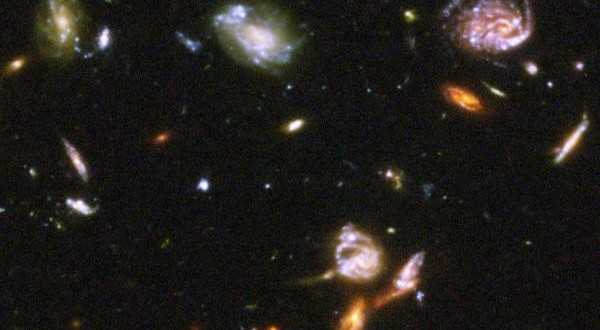There may be a new way to map the cosmos in 3D. UBC researchers have proposed a new way to calculate the distances of the cosmos using mysterious bursts of energy.
In a study featured in the journal Physical Review Letters, UBC researchers propose a new way to calculate cosmological distances using the bursts of energy also known as fast radio bursts. The method allows researchers to position distant galaxies in three dimensions and map out the cosmos.
“We’ve introduced the idea of using these new phenomena to study cosmological objects in the universe,” said Kiyoshi Masui, a postdoctoral fellow at UBC and a global scholar with the Canadian Institute for Advanced Research. “We believe we’ll be able to use these flashes to put together a picture of how galaxies are spread through space.”
Some unknown astrophysical phenomenon is causing these bursts of energy that appear as a short flashes of radio waves. While only 10 fast radio bursts have ever been recorded, scientists believe there could be thousands of them a day.
As these fast radio bursts travel toward Earth, they spread out and arrive at different times based on their wavelengths. The researchers propose using the delay between the arrival times of different frequencies to map the cosmos. The amount of spread in the signal that arrives on Earth gives scientists a sense of how many electrons, and by extension how much material including stars, gas and dark matter, are in between Earth and the source of the burst.
Canada’s CHIME (Canadian Hydrogen Intensity Mapping Experiment) radio telescope could offer the first set of regular data from fast radio bursts. The project is a collaboration between Canadian universities UBC, McGill, and the University of Toronto and is currently under construction at the Dominion Radio Astrophysical Observatory in Penticton, Canada.
“CHIME has the potential of seeing tens to hundreds of these events per day so we can build a catalogue of events,” said Kris Sigurdson, associate professor in the Department of Physics and Astronomy who is also part of the CHIME project. “If they are cosmological, we can use this information to build catalogue of galaxies.”
This method could be an efficient way to build a three-dimensional image of the cosmos. The tool could also be used to map the distribution of material in the universe and inform our understanding of how it evolved.
Agencies/Canadajournal
 Canada Journal – News of the World Articles and videos to bring you the biggest Canadian news stories from across the country every day
Canada Journal – News of the World Articles and videos to bring you the biggest Canadian news stories from across the country every day



